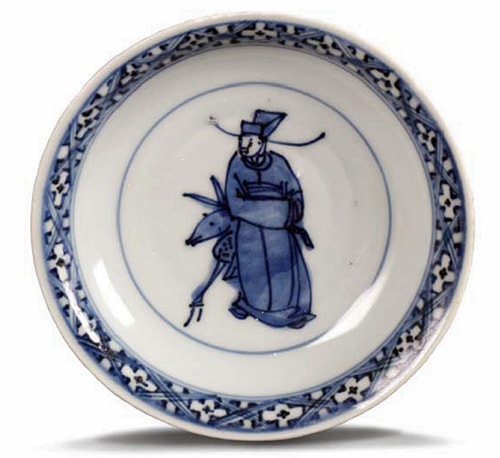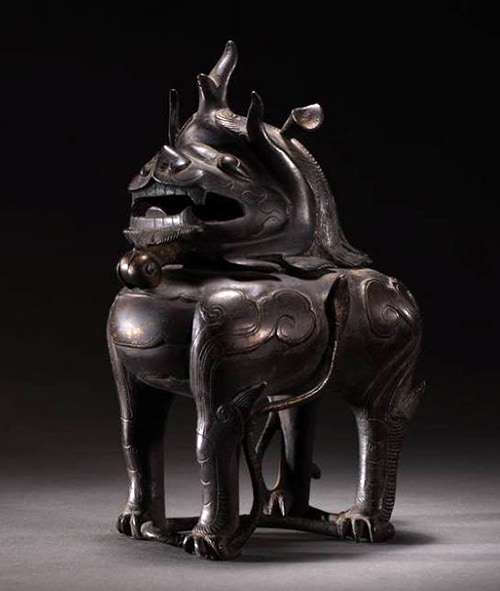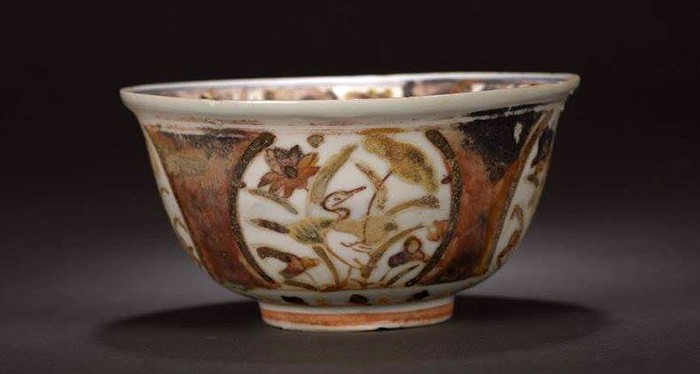An ancient trading ship called the Nan’ao No. 1 sank near Nan’ao Island off the coast of Guandong Province in southern China during the reign of the Ming Dynasty’s 13th emperor, Wanli (만력제, 萬曆帝) (r. 1572-1620).
The ill-fated vessel was carrying more than 26,000 goods on board, such as porcelain plates and pieces of pottery, which were all later excavated.
Among the findings, a trove of 237 treasures is being shown to the public for the first time here in Korea. The ancient relics are on display at the “Nan’ao No. 1, A Trading Ship of the Ming Dynasty” exhibition co-hosted by the National Research Institute of Maritime Cultural Heritage and the Guangdong Museum. The special exhibition kicked off on Nov. 29 at the institute’s museum in Mokpo, Jeollanam-do Province.

Numerous goods are discovered onboard a sunken Ming trading vessel, the Nan’ao No. 1, which sank off the coast of Nan’ao Island in Guandong Province, southern China, in the late 1500s or early 1600s.
The existence of the Chinese ship emerged for the first time in 2007 during an underwater excavation. A research group from the Guangdong Antique Archaeology Institute, the Guangdong Museum and the State Administration of Cultural Heritage of China carried out the joint excavation and discovered the sunken ship and its artifacts. The discovery was listed as one of the State Administration of Cultural Heritage’s “Top 10 New Historical Findings for 2010.”
By the time the Nan’ao No. 1 was sailing along the Chinese coast, sometime in the late 1500s or early 1600s, the dynasty lifted a fishing ban that had prohibited foreign ships from fishing within Ming waters, and there blossomed a golden era of the “Maritime Silk Road” as fishing and trading boats from across the region were allowed to sail to and from Ming cities.
The exhibition explores the sea-borne trade that went on during the Ming Dynasty by looking at goods discovered onboard the Nan’ao No. 1. The themes of the exhibit are “A Sunken Ship Into the Abyss,” “The Nan’ao No. 1: Sailors’ Life at Sea” and “The Development of Sea-borne Trade and the Encounter of Eastern and Western Civilizations.”
The exhibit has some artifacts excavated from other Ming Dynasty ships, too.

A series of findings from the sunken Ming trading ship Nan’ao No. 1 are on display at the ‘Nan’ao No.1, A Trading Ship of the Ming Dynasty’ exhibition currently underway at the National Research Institute of Maritime Cultural Heritage’s museum in Mokpo, Jeollanam-do Province.
“This exhibition is quite significant in that it introduces the Nan’ao No. 1’s legacy in Korea for the first time,” said an official from the National Research Institute of Maritime Cultural Heritage. “You will find what the ‘Maritime Silk Road’ during the Ming Dynasty actually looked like.”
The “Nan’ao No. 1, A Trading Ship of the Ming Dynasty” exhibition continues until March 1, 2017. It’s open from 9 a.m. to 6 p.m., with admission allowed until 5 p.m. It’s closed on Mondays.

A blue and white porcelain vase with flowers and vines is among the findings excavated from the sunken Nan’ao No. 1 ship that sank in Ming China.

A blue and white plate, one of the items discovered onboard the sunken Nan’ao No. 1 Ming Dynasty trading ship, features a public official and a deer.

A bronze animal-shaped incense burner is among the findings onboard the sunken Nan’ao No. 1 trading ship from Ming Dynasty China.

The Ming era sunken ship Nan’ao No. 1 carried lots of commercial goods, including this bowl with lotus flowers and white herons.
By Sohn JiAe
Korea.net Staff Writer
Photos: National Research Institute of Maritime Cultural Heritage
jiae5853@korea.kr






![[102nd March First Independence Movement Day] American journalist’s Seoul home to be opened to public](https://gangnam.com/file/2021/03/usr_1614255694426-218x150.jpg)
















